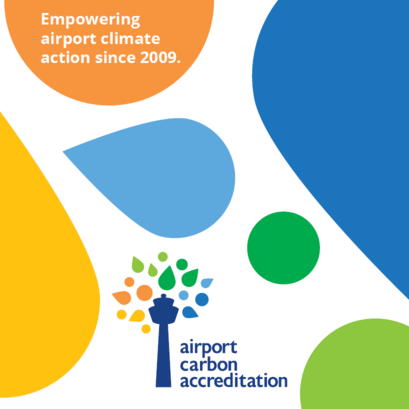Considerations for the Resuscitation of Airport Commercial Revenues
- 06 Aug 2020
Managing Partner of Paccaya Resources, Andrew Ford, recently sat down with our head of communications and events Jeannie Wong for a chat. He shared some key insights necessary for the resuscitation of commercial revenues at airports.
It goes without saying the COVID-19 pandemic has crippled the global economy and devastated the aviation sector at large. With the sector trying hard to restart and recover from the pandemic, companies are faced with a multitude of decisions on how best to resuscitate and resume commercial activities.
Andrew Ford, Managing Partner of Paccaya Resources, recently sat down with our head of communications and events Jeannie Wong for a chat. He shared some key insights necessary for the resuscitation of commercial revenues at airports.
Andrew concurred with ACI’s anticipation that recovery in the sector would be gradual and in phases as passenger traffic returns to airports across the regions. In fact, the latest projections indicate it will take four to seven years to recover to 2019 levels.
In the face of this sobering reality, how can airports ramp-up operations and business activities in order to protect and eventually, revert to growing commercial revenues? Andrew opined airports will need to resize and reshape their commercial businesses, but in the immediate term must address these key areas:
- Health & Safety – Re-assure passengers that the airport is a safe environment to enter
- Foster evolving program of passenger increases – bring passengers to the airport
- Business maximization of the current commercial platform
- Digitization of airport commercial businesses (both front and back-of-house)
- Longer term resizing and reshaping of the business.
Obviously, for the area of health and safety, airports are to a certain degree, dependent on external factors and stakeholders, including local governments and health authorities. There are only so many health and safety measures they can implement unilaterally, and these need to be implemented in order to a) protect health of airport employees and b) reassure passengers that airport businesses are safe to enter. In addition to this basic fundamental, there are opportunities for airports to collaborate with their business partners in the other areas with a view to restart and collectively safeguard commercial revenue opportunities from future uncertainties.
.png)
JW: COVID-19 was certainly the unexpected catalyst, prompting many operations to go digital. Indeed, we are already hearing of operations and business transactions at airports shifting to go frictionless, touchless, contactless, cashless, digitizing offerings, etc. But part of the shopping experience is to be able to see, touch or try out products. What can retailers do to increase dwell time under these such circumstances? How will going touchless impact some of the newer and larger airports which pride themselves in having so many square meters of gross floor area for retail shops and outlets? Does this mean airports will instead need to provide more back-of-house, storage areas for shops to stock up in order to meet e-commerce demands?
Focusing on the current business is key at the moment – keep those expenses down and generate as much business/cash flow as possible during the ramp up. And take advantage of new opportunities! The increased amount of dwell time passengers will experience in the terminal – more time at the gate waiting to embark is an opportunity to set up small gate duty free shops.
There’s a great deal of research information coming back to us about how passengers want to avoid crowded shops, restaurants, bars etc. and also want to avoid touching items unnecessarily – bathroom doors, check-in desks, touch screens, and even luxury brands in the shops. Some simply want to click, order, pay on their iPhone and collect the purchase from a service desk at the airport. As with the huge advances of virtual shopping in city centres, why not a virtual airport shop to order from?
You make reference in your question to large airports with a lot of space – use that space intelligently! Take out some of the unnecessary clutter and create visual experiences in F&B outlets and duty-free shops – customers may not want to touch items but they’re very happy to be entertained! Also, it helps spread people about in the shop or restaurant.
We touched on the digitization of the customer interface, but another key area is the digitization of the airport’s back-of-house. Getting food and consumer goods from the airport delivery center to the shelf goes through so many sets of hands! Perhaps now is the time to look at digitizing the whole process of getting the product through the airport and to the customer.
JW: What do you think will be the key differences between larger airports and smaller airports in developing nations in being able to meet the new expectations and demands of digitization?
Larger airports normally have a larger pool of skill sets and advisors to help
- drive the current business
- plan for increased digitization around the customer interface area and that of the airport’s supply chain.
Smaller airports will need to find the outside advisors to help them with this specialized area of work. At Paccaya, and for airports, we’ve developed a complimentary roadmap to aide with improving business in the ramp-up of passenger flows – if any of ACI’s members wish a copy we’d be happy to send it to them by email.
JW: We sometimes say we should err on the side caution and over-communicate at the expense of information overload. But you also mentioned that there are many communication barriers, creating clutter and confusion within the airport community. What are some examples and what can be done to ensure the open, transparent and clear communication?
An interesting example concerns the area of refuse! With all the increased number of masks, bottles of disinfectant and other health related PPE material, a number of airport refuse departments were taken by surprise. All airport stakeholders should be involved in the evolving situation so as to make informed and proper decisions.
Another area is airport commercial departments wanting to help concessionaires – this is to be applauded and is great, but make sure both the airport and concessionaire are involvement in an open discussion and joint objective to improve business. Not working together to develop a common program can result in funds being mis-spent and missing the objective.
JW: You also talked about the need for airports to share data and the desire to work in tandem with aeronautical teams. What are the benefits of doing so and what are your recommendations on how this can be achieved?
This is a very important area where airports can greatly improve the overall business. Driving aeronautical business is key to an airport’s success, and it also helps drive the second area, that of non-aeronautical revenues. Airports should;
- Ensure aeronautical and non-aeronautical teams are sharing information about expected flights and load factors. The non-aeronautical team needs to know what to expect in the way of potential customers.
- Share information in advance about expected flights and load factors with the airport concessionaires. The concessionaires can then ensure they have enough staff at key times, the right language needs, and in the right part of the terminal. Also, they should prioritize income generation by ensuring the right assortment/offer is ready for the customer type coming through the airport.
- As needs are changing, airports and concessionaires should ideally share information about changing traveler and nationality profiles. The big spending mainland Chinese travelers when travelling are expected to be younger, keen on health and wellness products, keener on experiences and less keen on shopping, etc. This type of information in important for both the airport and concessionaire to ensure the right offer is available for the expected key passenger/customer types.
Sharing data and communicating openly will help stimulate increased sales and an improved offer for the customer coming through the airport.
And this leads us to the overall airport imperative – to resize and reshape their business. It’s a huge task but needs to be done as airport businesses in the future will be fundamentally different from what they were pre Covid-19. Passenger will travel differently owing to health concerns, will shop differently and probably spend less, will eat in new ways at the airport, etc. and all of this needs to be reviewed to build new business plans for the airport.
- CATEGORY
- COUNTRY / AREA
- Hong Kong
- AUTHOR
- Jeannie WongACI Asia-Pacific









